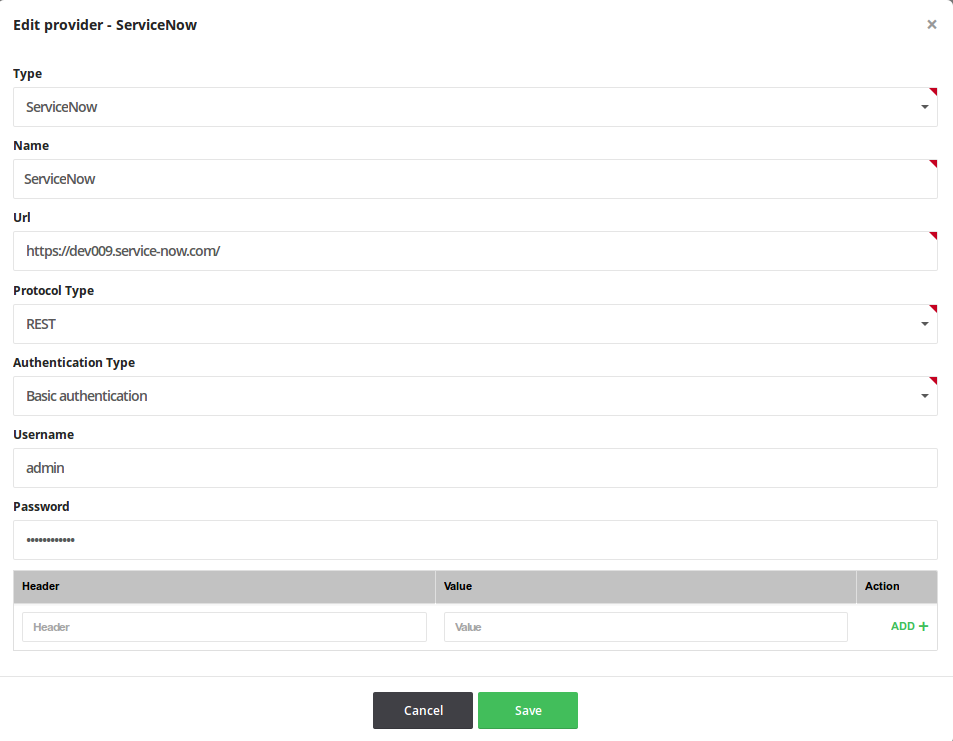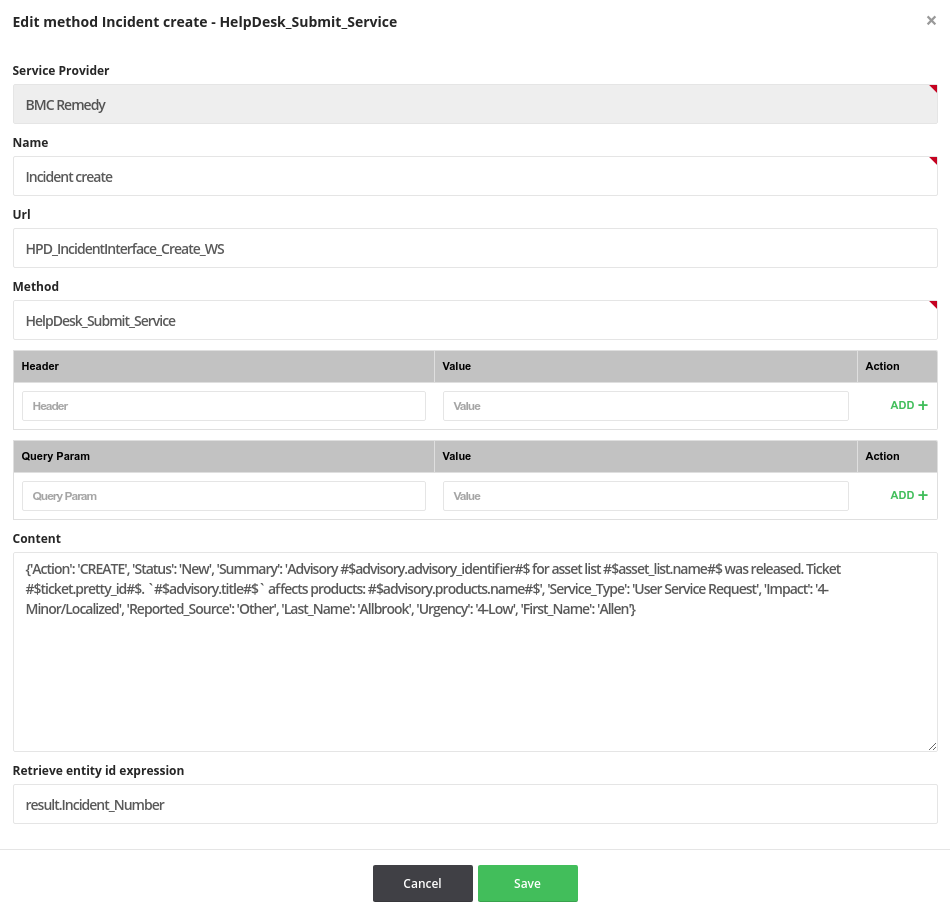Service Provider Methods
The service provider has methods, the actual endpoints that will be created. For the newly created service provider, you need to create the methods that will be called. A method is identified by the following:
|
Method |
Description |
||||||
|
service provider |
The service provider it belongs to. |
||||||
|
name |
Identifies the endpoint in the selection forms. |
||||||
|
url |
Partial url, that will be appended to the public API. |
||||||
|
method |
The method that will be called:
|
||||||
|
headers |
(Optional) Any custom headers that need to be sent with the request. |
||||||
|
query params |
(Optional) Any custom query strings that need to added to the URL. |
||||||
|
content |
The data part of the request:
|
||||||
|
retrieve entity id description |
After each call the system makes, it will try to extract the unique identifier for the external object that was created/updated, to be able to make change requests on the same object when the corresponding entity changes in Software Vulnerability Research. For instance, if an incident is created in ServiceNow when an advisory is released, the system is able to update the same incident if the advisory is updated. The expression under “retrieve entity id” is used to extract the object id from the response. |
The available options for Service Method and BMC Remedy each creates three methods: create, get and update entities. The methods can be customized to send more information in the existing fields and/or other fields.
The content and urls contain placeholders that are replaced before the request with the appropriate information. The placeholders are marked by the characters #$. The information that can be used in the placeholders is related to advisories, tickets, and the referenced object id. On the service methods page you can get full examples of the information available. Some examples are:
|
Placeholders |
Description |
|
#$advisory.advisory_identifier#$ |
The unique advisory identifier released by Secunia. |
|
#$advisory.title#$ |
The advisory title. |
|
#$advisory.products.name#$ |
Affected products. |
|
#$asset_list.name#$ |
Watch List name for which the advisory was released. |

ServiceNow Service Provider Example

ServiceNow Methods Example

Create BMC Remedy Example:

BMC Ready Methods Example